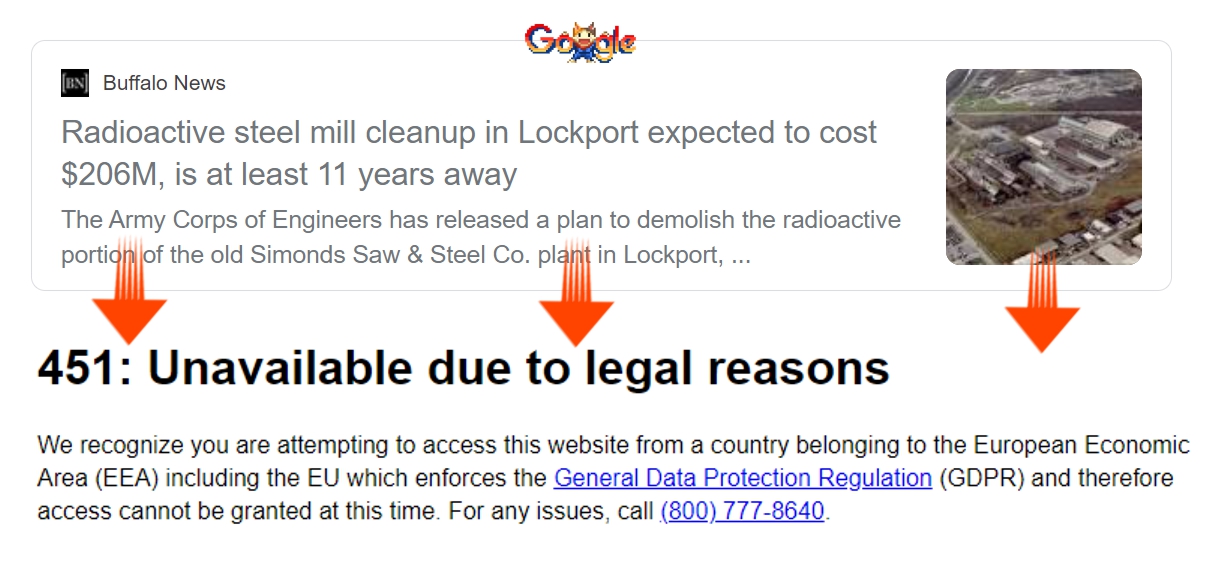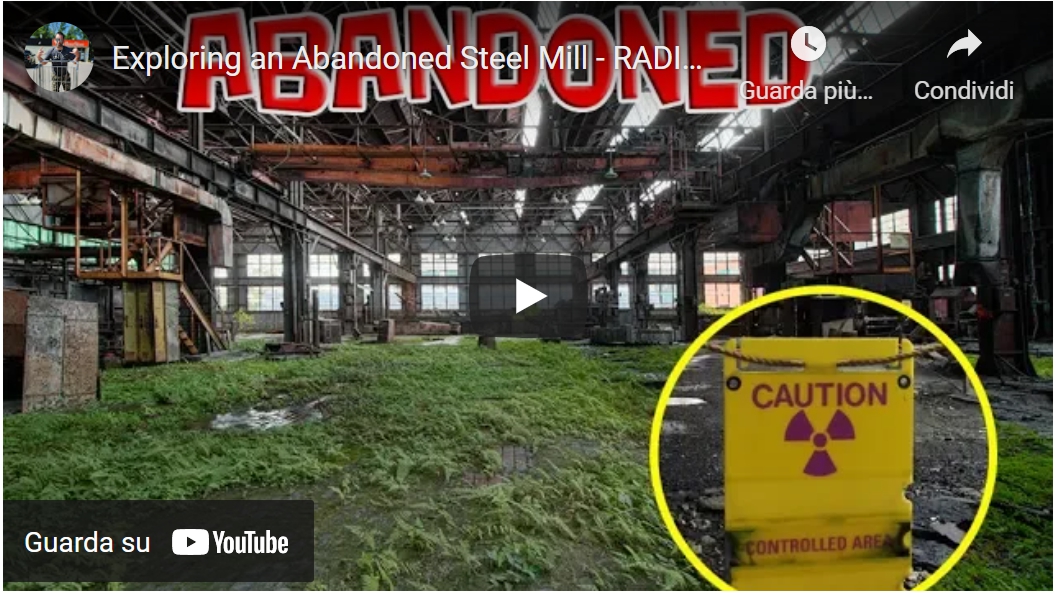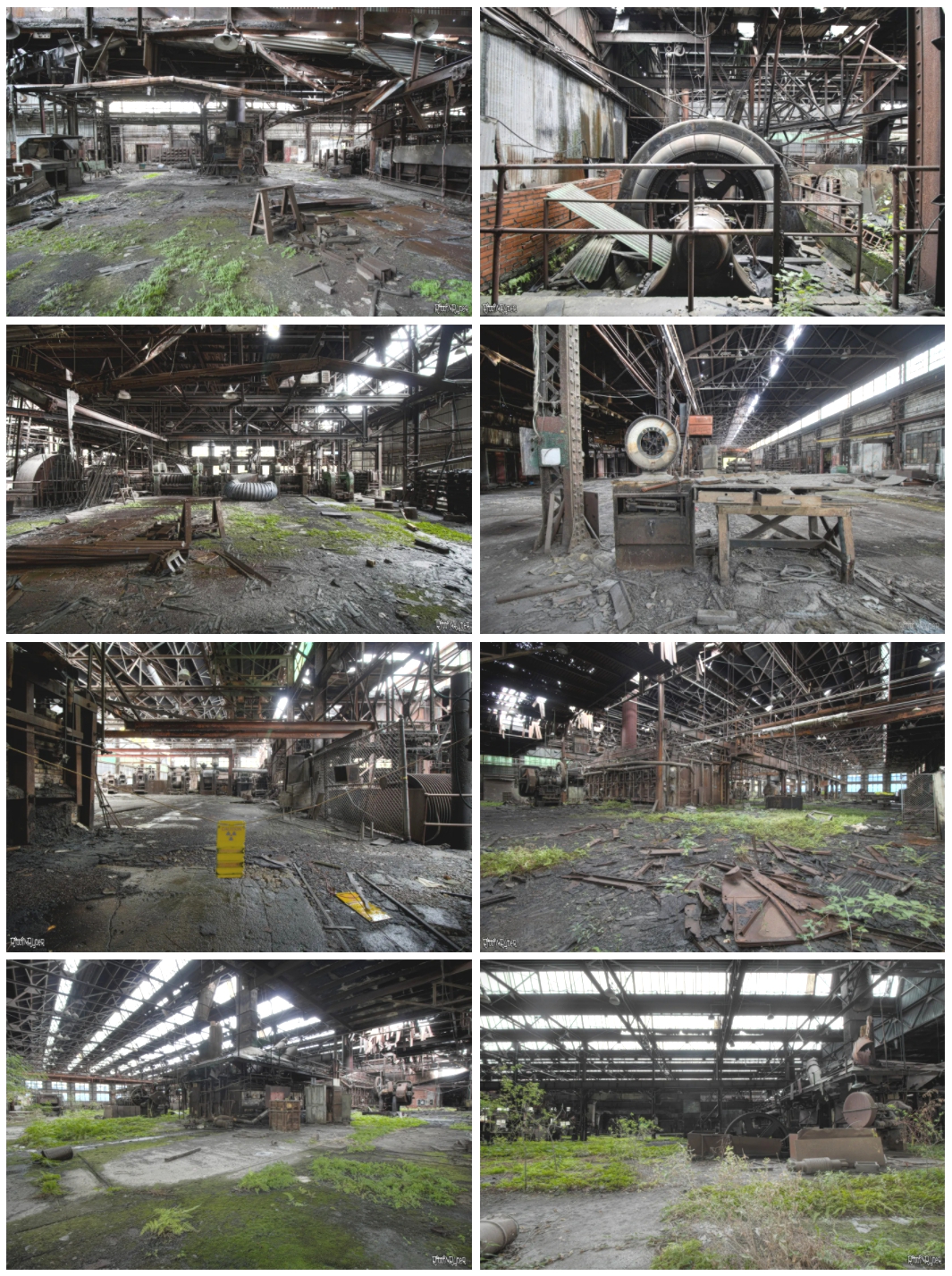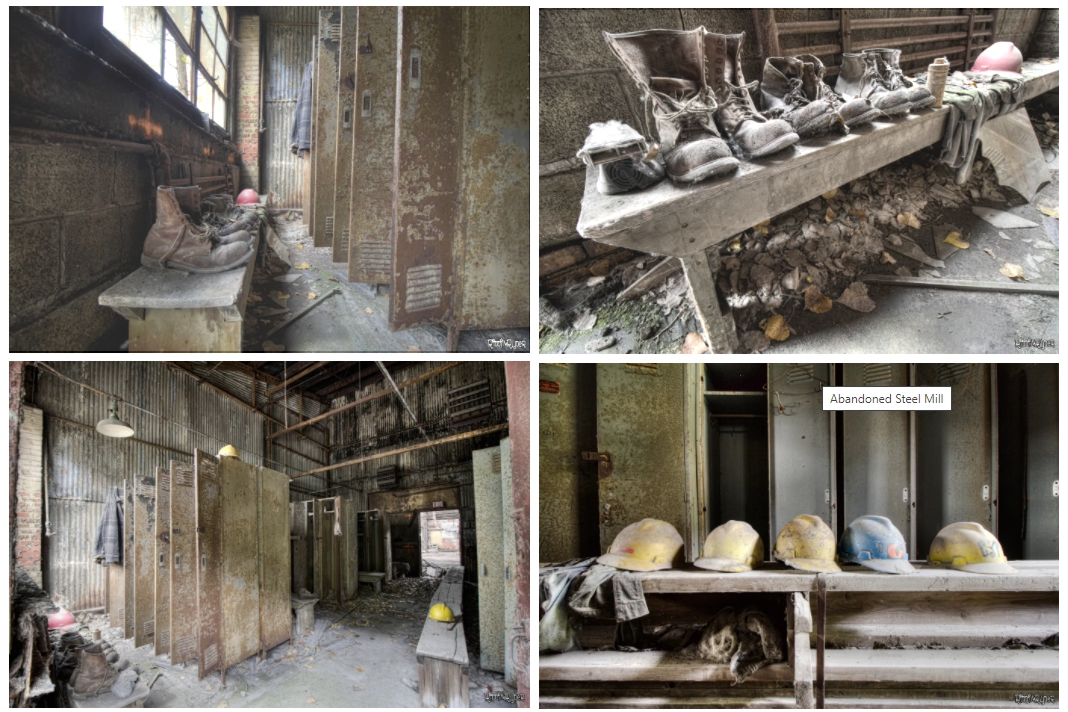Soil contaminated with Uranium and Thorium. But The news is not available to anyone.
Certain news are, OFTEN, in cover-up status among USA and EU with the following notice:
And, not always is easy to find other sources available from Europe (or from the rest of the world)
RELATED
Same news appears on OperaNews, But for the "Full Story" Eurepeans will see the same notice;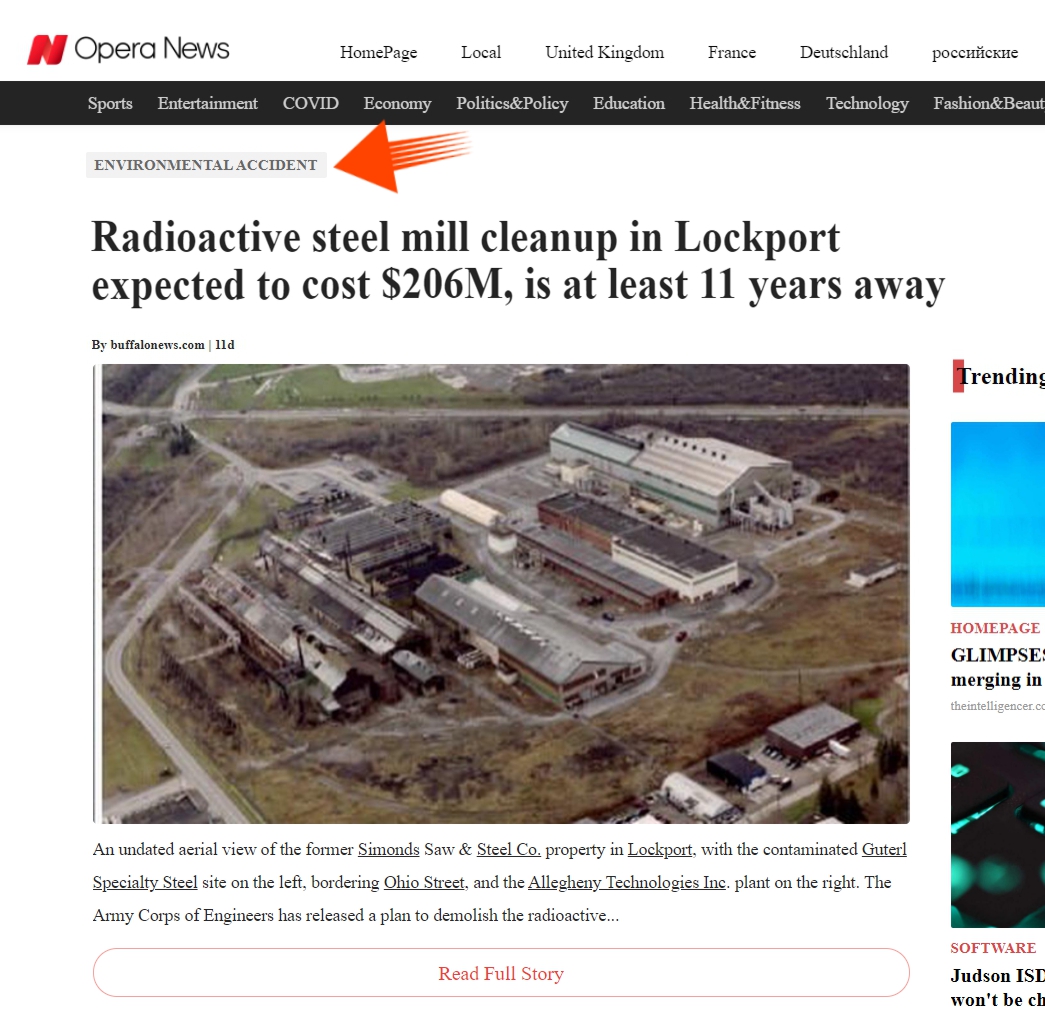
RELATED
We can know More from a Reportage appeared on riddimryder.com since December 28, 2019.
"In August of 2019... We head across the boarder into the United States with several locations to explore as well the plan of sleeping inside an abandoned insane asylum! One of the locations on our list was an abandoned steel mill which we had known about for many years but never took the time to actually get over there & explore it."
Abandoned Guterl Specialty Steel/Simonds Saw & Steel
The production of uranium metal for fabrication into slugs for fueling Hanford production reactors. Simonds also rolled thorium metal whose most likely use was irradiation in Hanford reactors for the weapons program.
In August 1982, GSSC filed for Chapter 11 (bankruptcy) protection & in March 1984 Allegheny International (now known as Allegheny Ludlum Corporation) bought out the assets of the GSSC. The purchase by Allegheny Ludlum Corporation included the entire site with the exception of two regions, classified as the excised property and the landfill. The excised property is approximately 3.6 hectares (ha [ 9 acres]), consists of a chain-link fenced area which surrounds all of the buildings that existed during the rolling operations from 1948 through 1956, and includes the adjacent exterior land areas. The landfill region was originally owned and used by Simonds Saw & Steel Company from 1962 to 1978, and was subsequently owned and used by GSSC from 1978 to 1980. The landfill area was used for the disposal of slag, baghouse flue dust, foundry sand, waste oils and greases, and miscellaneous plant rubbish. The landfill is not lined or covered, and although its surface has been regraded, ponding occurs and surface runoff is uncontrolled. The landfill region is currently a New York State superfund site.
"Today the plant sits rotting away & in terrible shape. Fences have fallen down & it`s not uncommon to see several deer while on the grounds & even inside the buildings. There are numerous class actions for former workers to receive compensation for both asbestos & radiation related diseases & although the plant is contaminated, it posed no risk to my health. There are plans to cleanup the site sometime starting in 2020 [...] >>>>"
Continue Reading More On The Original Source

